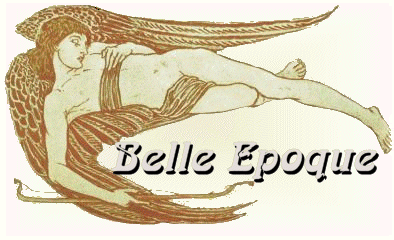The Belle Epoque in Europe
Denmark/Sweden: Silent movie of international reputation
Denmark
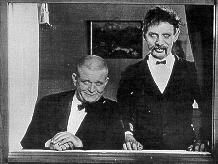
In the beginning of the century, Denmark was one of the most important film-making countries in the world. Its film pioneer was Ole Olsen (1863-1943), founder of the Nordisk Films Kompagni (1906), who for a long time had a considerable influence on the European film. The first movie he produced was Løvejagten paa Ellore (Lion's Hunt in Ellore, 1907) where an old circus lion was hunted in a realistic manner. But soon more ambitious movies were made: In 1913, August Blom (?-1947) made Atlantis based on a novel by Gerhard Hauptmann, Holger Madsen (1878-1943) in 1916 made Ned med vaabene (Down the Arms) based on the novel by Bertha von Suttner and in 1918 Himmelskibet (Skyship), one of the first science fiction movies.
But the most important economic success of the Danish film was caused by burlesque comedies in the most exotic surroundings as possible where erotism played an amazing role for that time. Movies like Maharajaens yndlingshustru (The Preferred Lover of the Maharaja, 1916) by Robert Dinesen (1874-1942) or Tempeldanserindens elskov (The Love of the Temple Dancer) by Holger Madsen had a world-wide success. But it was less the directors than the actors contributing to the success of the Danish film. Valdemar Psilander (1884-1917) who committed suicide at the height of his career and Olaf Fønss (1882-1949) who lateron continued his career in Germany were famous and popular around the world.
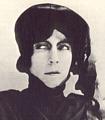
The greatest discovery, however, of the Danish film without any doubt was Asta Nielsen (1881-1972) who in 1910 under the direction of Urban Gad (1879-1947) made her first appearance in the movieAfgrunden (Abyss). Actually, by this movie, she simply tried to attract the attention of theatre's directors but instead she became a world-wide star, and not only the public and the critics but also poets admired and were enthusiastic about her. But only a year after her discovery, Asta Nielsen left her country and continued her triumphal career in Germany until 1916 and still during the Twenties.
It's a strange thing, but the two most important Danish directors of that time, Carl Theodor Dreyer (1889-1968) and Benjamin Christensen (1879-1959), had a less important influence on the Danish film. In 1913 already, Christensen made his first movie, the espionage story Det hemmelighedsfulde X (The Mysterious X), and he had his first international success with his short-stories movie Blade af satans bog (Pages of Satan's Book, 1920). But then, the real height of the Danish film was already over. So, Dreyer worked several times abroad - in Norway, in Sweden, in Germany, and in France where he created with La passion de Jeanne d'Arc (The Passion of Joan of Arc, 1928) one of the most famous silent movies.
At that moment, the Danish film had already reached a state of insignificance. The world now knew only Pat and Patachon (Long and Short/Ole and Axel), Carl Schenstrøm (1881-1942) and Harald Madsen (1890-1919), who for a long time were the most famous and popular comedians of Europe.
Sweden
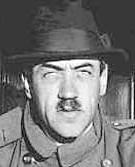
With the fall of the Danish film started the rise of the Swedish film art represented above all by the directors Victor Sjøstrøm (1879-1960) and Mauritz Stiller (1883-1928). Around 1912, both had started to make films, and both had first imitated the Danish movies. Sjøstrøm was the first one to liberate himself from these examples. With his movies Terje Vigen (1916) and Berg-Eyvind och hans hustru (Berg-Eyvind and his wife, 1917), he had found his own style and at the same time marked the "Scandinavian style" which then influenced many film-makers around Europe and the USA. Sjøstrøm told simple stories, often based on novels of Selma Lagerløf, with dramatic and rectilinear action. But above all he succeeded to create realistic pictures of nature which were not just accidental parts of the decoration but important elements of the action. Sjøstrøm also proved skill and taste by exposing the unreal. E. g., in his movie Ingmarssønerna (Ingmar's Sons, 1918), based on the first part of Selma Lagerløf's novel Jerusalem, there is a famous scene where the protagonists ask their ancestors in heaven for advice. Moreover, in Kørkarlen (1920), by visual means, he produces an atmosphere integrating the supernatural in a convincing manner.
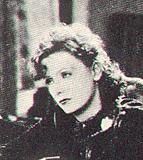
In 1922, Sjøstrøm went to Hollywood where he made other remarkable movies. When he returned to Sweden in 1930, the height of the Swedish film was over. He only made one more movie in his native country.
Mauritz Stiller started first preferring about the same subjects as did Sjøstrøm while treating them less lyrically and less romantically but rather dramatically with vivacious effects. One of his greatest successes was the adaptation of Selma Lagerløf's Herr Arnes pengar (The Treasure of Mr. Arne, 1919). Besides, by making Riddaren av igar (1920), he developped a style of cinegraphic comedy which among others strongly influenced Ernst Lubitsch. His movie Gøsta Berlings saga (1923) was the beginning of an incomparable career of an actress: Greta Garbo (1905-1990). In 1925, Stiller went together with her to Hollywood. After not having had the success he had hoped for, he returned to Sweden in 1928 and died within the same year. After the engagement of Sjøstrøm and Stiller in Hollywood, the big time of the Swedish silent movie was virtually over.
